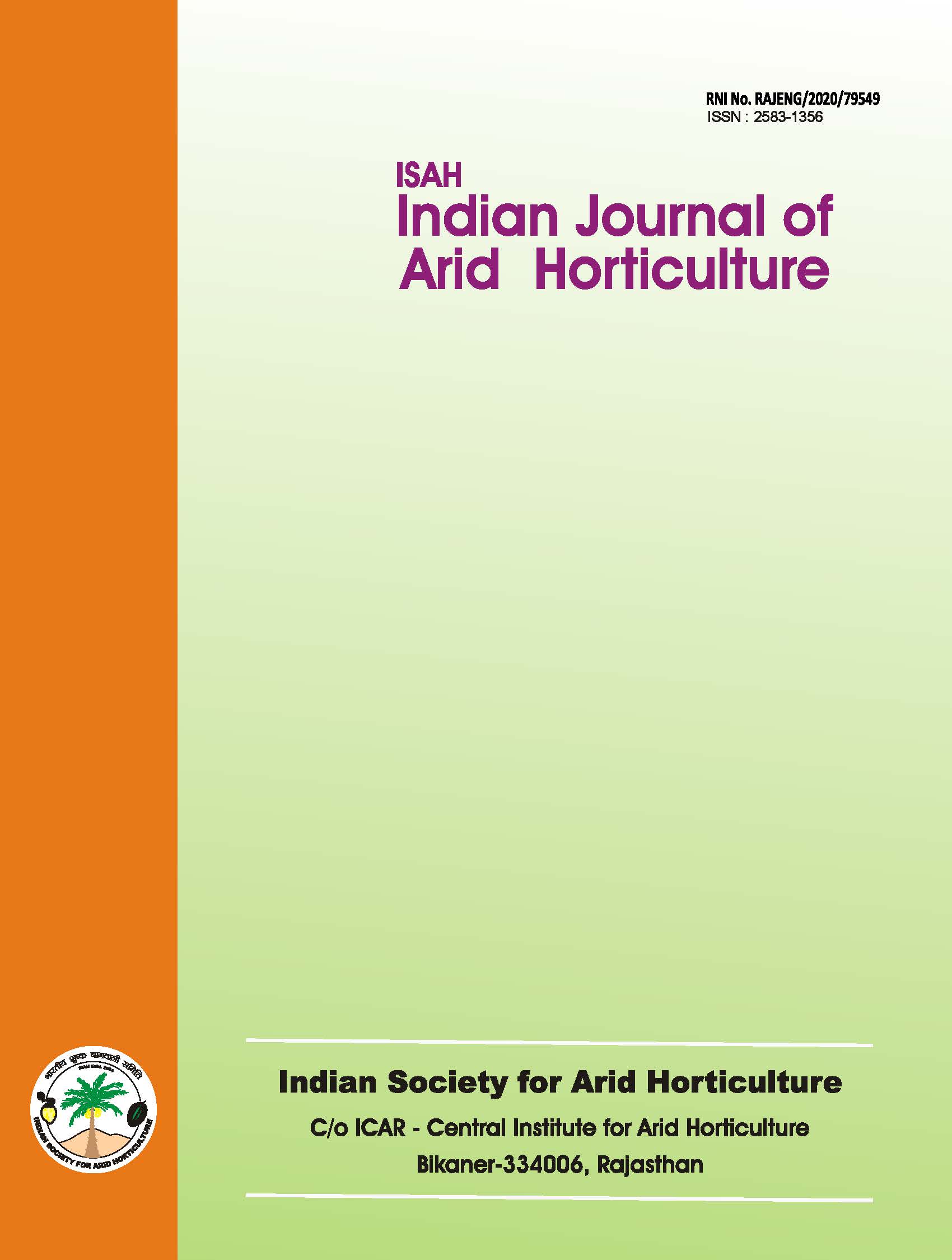Xeriscaping in arid climates
Keywords:
Xeriscaping, Xerigation, Xerimulch, Arid.Abstract
Xeriscape is a systematic concept for saving water in landscaped areas. Xeriscaping (zer-i-skaping) is a word originally coined by a special task force of the Denver Water Department, Associated Landscape Contractors of Colorado and Colorado State University, USA to describe landscaping with water conservation as a major objective. Even though dry-only landscaping can be quite spectacularly colorful, and even lush, limited areas of more highly watered landscape are completely consistent with wise water use. There are vast arrays of wonderful plants indigenous to all regions, non-invasive introduced plants, that are well adapted to the local regional climate, are wonderful additions to landscaping that uses water frugally. Xeriscape is not necessarily a lawn less landscaping. Some lawns, even of species that are more highly watered, can be consistent with wise water use. "Less-lawn landscaping," rather than "Lawn-less landscaping" is an appropriate statement. On the contrary, well planned Xeriscapes are splendid examples of beauty and diversity.Downloads
References
Aga, Khan. 1996. Sustainable Landscape Design. In Arid
for Climates. The Aga Khan Trust
Culture Alternatives with Low water Needs. California Agriculture, 23(2):11-17.
Amy, Jo Detweiler and Patrick Griffiths. 2005. An Introduction to Xeriscaping in the High Desert and Pictorial Plant Guide for Central and Eastern Oregon.Central Oreg Cities Organization Publishing, Oregon State University Extension Service, United States pp.34-37.
Anon, June. 1985. Xeriscape. Conserving Water Through Creative Landscaping. Journal of Landscape & Irrigation, 34(8):62-70.
Anon, March 1986. Plants for Xeriscaping. Journal of
American Society of Horticultural Science, 26(2): 90-98.
Christopher, Thomas, April 1988. Drip Irrigation: Conservation of water to the south-east, Pictorial
Plant Guide for Central and Easter Oregon, Clemson
university. pp. 28-38.
Dwiggins, Pam. 1985. Xeriscape- The New Word in Landscaping. pp. 56-71. National Wildlife
Research Center (U.S), Research campus of Colorado State University in Fort Collins. Gibeault, Victor A., Jewell L. Meyer., Autio Richard. and Ralph Strohman. 1989. Turfgrass Alternatives with Low water Needs. Journal of California Agriculture, 43(6): 20-22.
Gouin, F.R. 1993. Utilization of sewage sludge compost in horticulture. Hort. Technology, 3:161-163. Huddleson, S. and Hussey,M. 1997.Grow Native: techniques of selecting cultivars. Journal of American Society of Horticultural Science, 11(8):45-50. Jhon Kelly, Mary Haque, Debra Shuping and Jeff Jahner, 1991. Xeriscape landscape water conservation to the South-east, Clemson university. pp.33-39.
Klassen, S. and Gilpin, J., 1999. Alberta irrigation in the old and new millenium. Canadian Water Resources Journal, 24(1):61-69.
Knox, Kim, ed. 1995, Landscaping for Water Conservation:
Xeriscape. pp.48-60. Jointly published by City of Aurora and Denver Water, United States. McLean, David, May 15, 1989. Xeriscape in Florida: A
Concept that Needs the Growth.
Powell, B., 1982. Soils of the Gatton Research Station, Queensland Department of Primary Industries Bulletin QB82005, Brisbane, Australia. Privette, C.V. 1987. Irrigating Your Lawn and Garden, pp.49- 55. Clemson University Cooperative Extension Service Circular 580.
Robinette, Gary O and Nostrand Reinhold, 1984. Water Conservation in Landscape Design and
M. Malakar, P. Acharyya and R. Bhargava, Indian Journal of Arid Horticulture, 2015, Vol. 10(1-2):1-12

